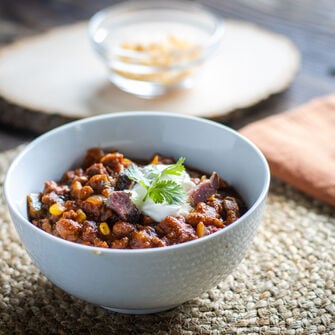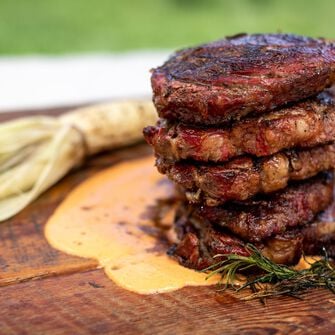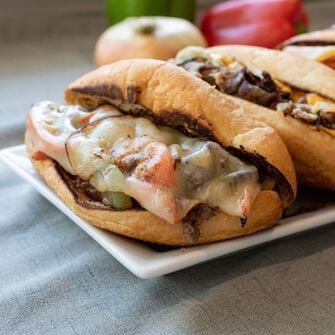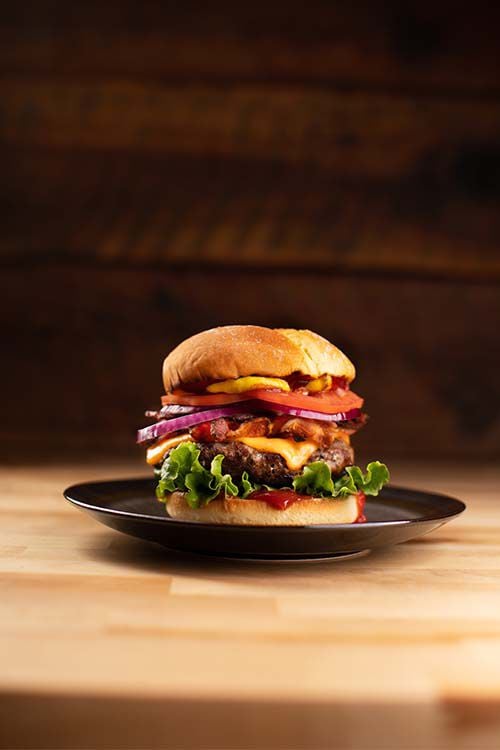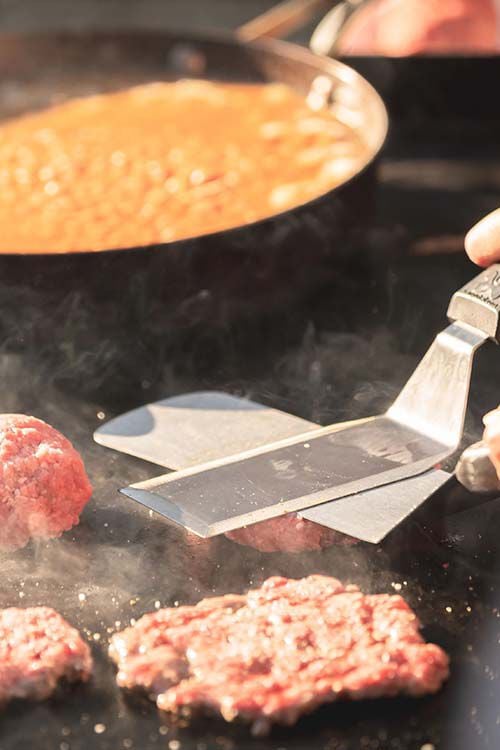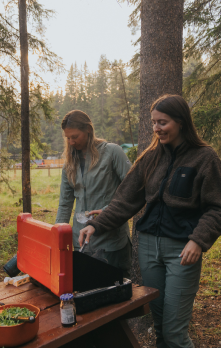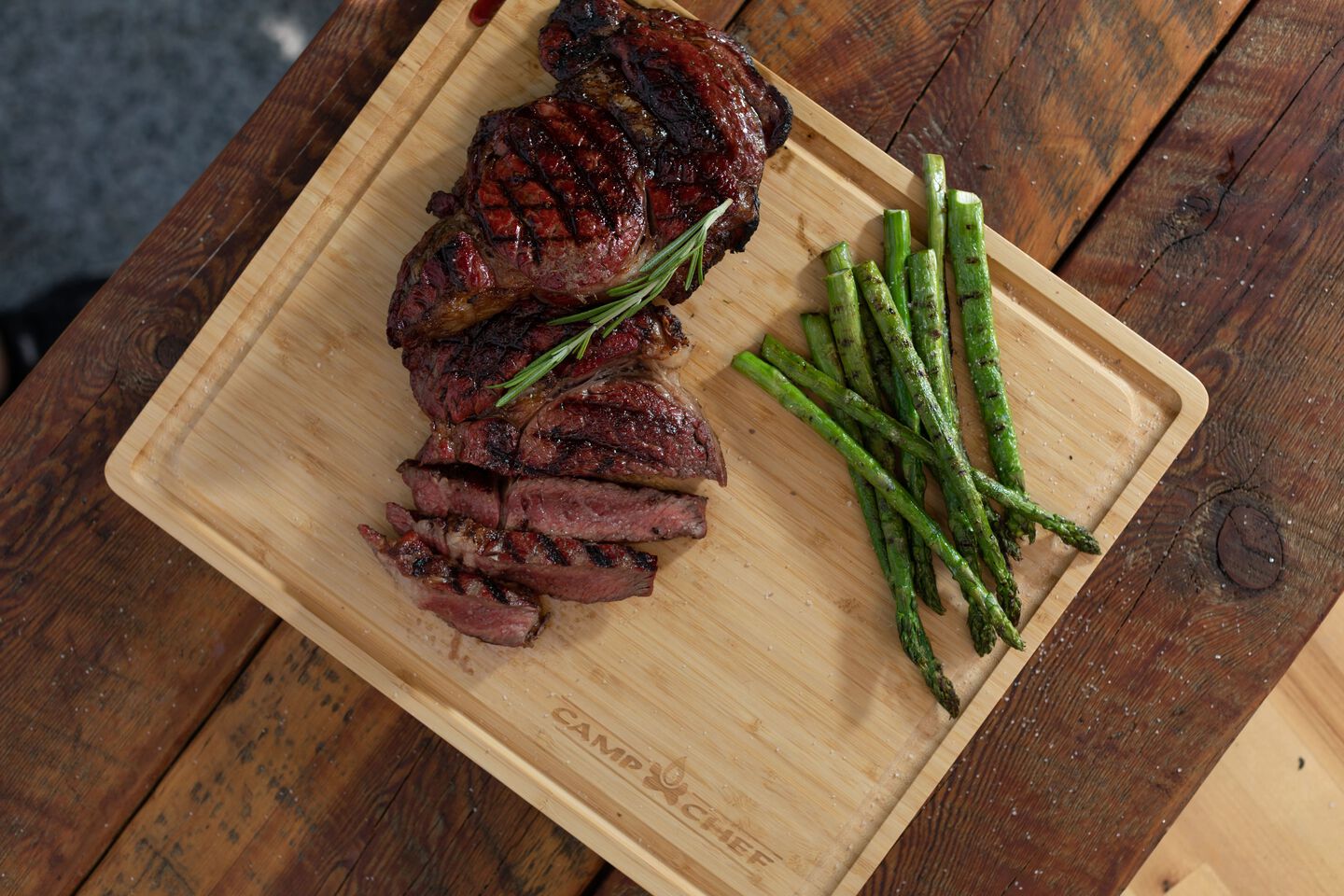
Reverse Sear Steak

prep
5 Min

cook
1 Hr

feeds
2
If you have not tried a reverse seared steak, stop what you are doing, watch our video, and then go and do. Slowly raising the internal temperature, letting it rest for 5-10 minutes, then searing it on nearly 900°F cast iron grates... it's the flavor your taste buds didn't know they have been wanting for. Once you cook a steak this way, you won't want to do it any other way.
What is the difference in a reverse sear and traditionally seared steak?
The traditional method for cooking a steak involves searing it first over high heat, and then finishing it in the oven or on a lower heat until it reaches the desired level of doneness. This method can produce a crusty exterior and a juicy interior, but it requires careful timing and attention to prevent overcooking.
The reverse sear method involves cooking the steak low and slow in the oven or on a smoker until it reaches an internal temperature just below the desired doneness, and then finishing it with a quick sear on high heat to develop a crust. This method is preferred by some because it can produce a more evenly cooked steak with a tender texture and a flavorful crust. Cooking this steak on a pellet grill is ideal because you can go low and slow then hot and fast on the same grill.
The main difference between the two methods is the order in which the searing and cooking are done. The traditional method involves searing first, while the reverse sear method involves cooking first and then searing. Both methods have their own advantages and disadvantages, and the choice between the two ultimately comes down to personal preference. Often times when asking if traditional sear or reverse sear is better comes down to personal preference. How long to cook a steak on a pellet grill is also personal preference. How to cook a steak on a pellet grill? Again, personal preference. look like the only way to truly answer your questions is to make several steaks and see for your self.
Is a traditional or reverse seared steak better?
Whether the reverse sear or traditional sear method is better for cooking a steak is subjective and largely depends on personal preference.
The traditional sear method can produce a nicely charred exterior and a juicy interior, but it requires careful timing and attention to prevent overcooking. This method can work well for thinner cuts of steak that cook quickly, but can be more challenging for thicker cuts.
On the other hand, the reverse sear method involves cooking the steak low and slow in the oven or on a smoker until it reaches an internal temperature just below the desired doneness, and then finishing it with a quick sear on high heat to develop a crust. This method can produce a more evenly cooked steak with a tender texture and a flavorful crust, but it may not develop as much of a charred exterior as the traditional sear method.
Ultimately, the best method for cooking a steak is the one that you prefer and that works best for the specific cut of steak that you are cooking. It's worth experimenting with both methods to find the one that produces the desired result for you.
What should I look for when picking out a steak?
When selecting a good steak, there are several factors to consider:
Quality: Look for high-quality cuts of meat, ideally from grass-fed or pasture-raised animals. Look for marbling in the meat, which is the small veins of fat running through the muscle that can help to enhance the flavor and tenderness of the meat.
Cut: Different cuts of steak have different levels of tenderness and flavor. Consider the type of steak you want, such as a ribeye, filet mignon, or New York strip.
Color: The meat should be a bright, deep red color, indicating that it is fresh and of good quality. Avoid meat that is brown or gray in color.
Thickness: A thicker steak will be easier to cook to the desired level of doneness without overcooking or undercooking.
Firmness: The meat should feel firm and spring back when touched. If it feels too soft or mushy, it may not be fresh.
Age: Aged meat tends to be more tender and flavorful, as the natural enzymes in the meat have had time to break down the muscle fibers. Look for meat that has been dry-aged for at least 21 days.
Origin: Consider the source of the meat, such as a reputable butcher or a trusted farm. Knowing where the meat came from and how it was raised can give you more confidence in the quality of the product.
By considering these factors when selecting a steak, you can ensure that you are getting a high-quality piece of meat that is flavorful, tender, and easy to cook to perfection.
Does a grass fed or grain fed steak taste better?
The taste of grass-fed vs. grain-fed beef is subjective and depends on personal preference.
Grass-fed beef tends to have a more pronounced beefy flavor, with a slightly gamey or earthy taste. This is due to the fact that grass-fed cattle have a more varied diet, which can include various types of grasses, herbs, and flowers. Grass-fed beef also tends to be leaner, which can affect the texture and tenderness of the meat.
Grain-fed beef, on the other hand, tends to have a milder, sweeter flavor with a more buttery or nutty taste. This is because grain-fed cattle are typically fed a diet that is high in corn and other grains, which can affect the flavor and fat content of the meat. Grain-fed beef is also often more marbled, which can result in a more tender and juicy steak.
In general, grass-fed beef is considered to be a healthier option, as it is lower in saturated fat and higher in beneficial nutrients like omega-3 fatty acids and conjugated linoleic acid (CLA). However, the taste and texture of grass-fed beef can be different from what some people are used to with grain-fed beef.
Ultimately, the choice between grass-fed and grain-fed beef comes down to personal preference. Some people may prefer the more pronounced flavor of grass-fed beef, while others may prefer the milder, sweeter taste of grain-fed beef. It's worth trying both types of beef to see which one you prefer.
Is smoking or grilling a steak better?
The best way to cook a steak comes down to what you are looking for. Smoking a steak on a pellet grill or smoker gives a unique flavor you cannot get on a normal propane grill. Reverse searing the steak can give more smoke flavor but tends to be harder to prefect a crust. In a pellet grill you can run it hot and fast like a normal grill and still get a unique flavor without the low and slow aspect of smoking it. On the other hand if you don't have a pellet grill to cook a steak you can still create some mouth watering dishes. Subjective questions are loaded. Personal preference, time, the crowd you are cooking for all come into play on the best way to cook steaks.
Ingredients
2 thick-cut ribeye steaks
Salt and pepper
Instructions
Reverse Sear steak
Step 1
Preheat smoker or pellet grill to 225°F. Once it is up to temperature place your steaks on the top rack.
Step 2
Smoke your steaks until the internal temperature is about 20°F under desired finish temperature. This is to prevent over cooking them once you sear it. Medium rare is considered 135°F and is the most popular temperature to cook a steak to.
Step 3
When the internal temp get close to 20°F under your desired temp, start your Sidekick Sear and place on medium to high heat.
Step 4
Place each steak on the BBQ Box for about 30-60 seconds. Rotate about 45° to get diamond sear marks and sear for another 30-60 seconds.
Step 5
Then turn the steaks and repeat the process. Make sure to be monitoring the internal temperature to avoid over cooking the steaks. Even though you are not searing for very long the internal temperature will rise and continue to rise even when you are done cooking it and letting them rest.






